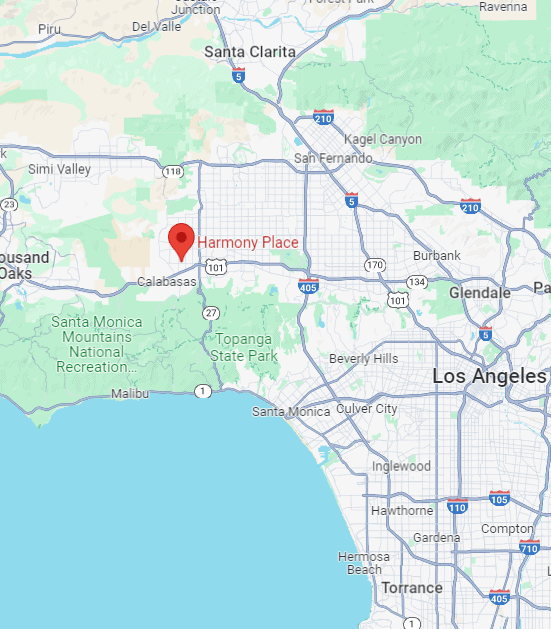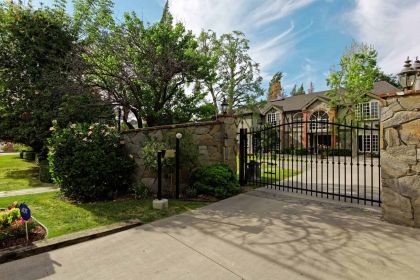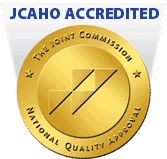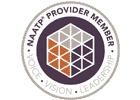Methadone Medication Treatment, Clinics, and Doctors in Los Angeles, California
Harmony Place operates addiction recovery centers that offer methadone treatment in Los Angeles. If you are struggling with opioid dependence, our methadone Medication-Assisted Treatment (MAT) for opioid use disorder is designed to guide you through the entire recovery process, from methadone detox to long-term MAT therapy.
Our Los Angeles methadone clinic can provide you with information on how to pay for methadone treatment in Los Angeles. Our methadone addiction treatment aims to help you conquer opioid dependence and offers dual diagnosis treatment if you are facing co-occurring disorders. On this page, you will discover the difference between Suboxone vs. methadone as well as Subutex vs. methadone. It also explains the MAT effectiveness of using methadone for opioid addiction.
What Is Methadone? Facts You Should Know
Methadone prescription is a synthetic opioid used for opioid withdrawal management in Methadone Maintenance Therapy (MMT). Methadone for Medication-Assisted Treatment (MAT) comes in many forms, such as liquid, tablets, and injections. Methadone-assisted recovery must be administered at a methadone clinic, under the supervision of a healthcare professional, to minimize the risk of misuse of this medication for opioid dependence.
Common side effects of methadone opioid treatment include constipation, drowsiness, dry mouth, nausea, and sweating. There are also serious risks such as respiratory depression, overdose, and irregular heart rhythms. As a controlled substance, methadone is closely monitored in medical settings for OUD treatment. Methadone therapy aims to eliminate or reduce illicit opioid use, lower the risk of overdose, stabilize emotional and physical health, and enhance overall quality of life.
Why Is Methadone Prescribed?
Methadone is mainly prescribed for opioid addiction treatment and for managing chronic pain. Methadone rehab is utilized as part of Medication-Assisted Treatment (MAT). Methadone helps to alleviate withdrawal symptoms, reduce cravings, and block the euphoric effects of other drugs.
In addition, methadone replacement therapy is also used to address chronic pain, particularly when other pain medications have proven ineffective. However, it is crucial that a healthcare professional, like Los Angeles methadone doctors, closely monitor methadone treatment due to the potential risks of abuse and overdose.
What Is Methadone Used to Treat?
Methadone is mainly a medication for opioid dependence. Healthcare providers prescribe methadone for Medication-Assisted Treatment (MAT). At Harmony Place, we are frequently asked, “Are methadone doctors near me accepting new patients?” Our Los Angeles methadone clinics can help you overcome your opioid dependence.
The typical side effects associated with methadone treatment often include drowsiness, headaches, insomnia, nausea, constipation, dry mouth, sweating, and sexual dysfunction. Meanwhile, some serious side effects, which are less frequent, may include heart issues, respiratory depression, low blood pressure, dependency, and withdrawal symptoms, as well as allergic reactions like itching, rashes, and swelling.
Methadone Use in Medication-Assisted Treatment
Medication-Assisted Treatment (MAT) is a widely used approach for addressing Opioid Use Disorder (OUD). This strategy combines medications such as methadone within opioid addiction treatment programs, with the goals of reducing the risk of overdose and death, enhancing treatment adherence, curbing cravings, stabilizing the body, and easing withdrawal symptoms.
Methadone is primarily prescribed for the management of opioid addiction treatment. Within this context, methadone detoxification plays a vital role in MAT if you’re battling opioid dependence. As a long-acting opioid agonist, it activates opioid receptors in the brain, helping to ease withdrawal symptoms, diminish cravings, and block the pleasurable effects of other opioids. Research shows that methadone therapy effectively decreases opioid use, enhances social functioning, lowers overdose fatalities, curbs criminal activity, and fosters sustained sobriety. The MAT program requirements combine methadone MAT and counseling with harm reduction strategies. Contact us at Harmony Place to discover more about our methadone MAT vs. abstinence-based treatment.
Is Methadone the Same as Suboxone?
Even though Methadone and Suboxone are both medications that assist with treating opioid dependence, they are not the same. Methadone is a full opioid agonist, meaning it activates your brain’s opioid receptors to alleviate cravings and withdrawal symptoms. It is dispensed daily at methadone clinics under medical supervision, due to its ability to mimic opioid effects and potential for misuse.
In contrast, Suboxone is a combination of buprenorphine, a partial opioid agonist, and naloxone. This opioid antagonist is like naltrexone for addiction, which is also used for opioid dependence as well as MAT for Alcohol Use Disorder (AUD). Buprenorphine effectively manages withdrawal and cravings but has a ceiling effect, which reduces the risk of misuse and overdose compared to full agonists like methadone. The naloxone component is included to discourage misuse through injection. Suboxone can often be prescribed by certified doctors for home use, providing more flexibility. Although both medications are effective, the decision between them usually hinges on your needs, history, and access to care.
Is Buprenorphine the Same as Methadone?
Buprenorphine and methadone are both effective medications for treating opioid use disorder (OUD), yet they differ significantly. Methadone functions as a full opioid agonist, which means it completely activates opioid receptors in the brain to manage withdrawal symptoms and diminish cravings. It is typically administered through specialized methadone clinics under strict oversight due to its potential for misuse and overdose.
On the other hand, buprenorphine therapy acts as a partial opioid agonist, activating the same receptors but to a lesser extent than methadone. This characteristic enhances its safety, particularly regarding overdose risk, as its effects level off at a specific dose, a phenomenon referred to as the ceiling effect. Buprenorphine is often paired with naloxone (as in Suboxone) to discourage misuse further. Unlike methadone, it can be prescribed by certified healthcare providers in a variety of settings, which offers greater accessibility.
Is Methadone the Same as Subutex?
Methadone and Subutex are both medications designed to treat opioid dependence, yet they differ significantly. Methadone is a full opioid agonist, meaning it fully activates opioid receptors in the brain to reduce cravings and withdrawal symptoms. Having been utilized for decades in Medication-Assisted Treatment (MAT), methadone helps to stabilize your body by mitigating the highs and lows of opioid use.
Conversely, Subutex contains buprenorphine, which acts as a partial opioid agonist. This means it activates the same opioid receptors as methadone but at a much lower intensity, resulting in a reduced risk of overdose. Subutex is frequently prescribed in outpatient settings and can be taken at home, providing more flexibility compared to methadone treatment. While both medications effectively support recovery from opioid addiction, they vary in potency, method of administration, and potential for abuse, making the decision between them reliant on your needs and medical guidance.
Los Angeles Statistics and Info on Methadone Use in Addiction Treatment
Methadone treatment plays a vital role in Medication-Assisted Treatment (MAT) and has gained significant importance in combating opioid dependence in Los Angeles. MAT combines FDA-approved medications, such as methadone and buprenorphine therapy, with behavioral therapies and counseling, creating a comprehensive approach to recovery.
The U.S. Department of Health and Human Services recognizes MAT as one of the most effective methods of opioid addiction treatment. In Los Angeles, methadone is classified as a Schedule II controlled substance, which means its distribution is rigorously controlled, necessitating strict record-keeping and security protocols to ensure safe administration. The county has experienced a troubling increase in opioid-related deaths, with 2,202 overdose fatalities recorded in 2020—an alarming rise of 46.7 percent from the previous year. In 2019, California had 96,960 individuals enrolled in substance abuse treatment programs, many of whom were receiving methadone MAT, highlighting the continued reliance on this evidence-based approach to tackle opioid dependence.

We Will Check Your Insurance for Methadone MAT
What Drug Addictions Are Treated with Methadone Medication?
Methadone is a long-lasting synthetic opioid that has been extensively utilized for many years as a Medication-Assisted Treatment (MAT) for different types of opioid dependence. It alleviates withdrawal symptoms and cravings without causing the euphoric high often linked to opioid misuse. Even though this is not an exhaustive list, here are some addictions for which methadone is commonly used:
Prescription Opioid Addiction
Methadone is frequently prescribed to assist with your addiction to prescription opioids like oxycodone, hydrocodone, morphine, and codeine. These medications are often initially given for pain management; however, misuse—whether through higher doses or use without a prescription—can swiftly result in physical dependence and addiction. Methadone works by stabilizing brain chemistry, alleviating intense cravings, and reducing withdrawal symptoms that arise when these drugs are stopped.
If you’re undergoing opioid addiction treatment, methadone is provided in controlled doses under medical supervision to prevent misuse while facilitating methadone-assisted recovery. It enables you to regain stability and functionality in your life while lowering the risk of overdose and other health issues related to untreated opioid addiction. Long-term use may either be part of a methadone maintenance strategy.

Synthetic Opioid Addiction
Synthetic opioids, including fentanyl, are among the most potent and hazardous substances fueling the current opioid crisis. These drugs are far more powerful than morphine and carry a significant risk of overdose, often resulting in fatal consequences. Methadone Medication-Assisted Treatment (MAT) addresses synthetic opioid dependence, as it effectively alleviates the severe withdrawal symptoms associated with discontinuing these potent substances.
When dealing with fentanyl or similar drugs, opioid withdrawal management can become more challenging due to their potency and the rapid onset of opioid dependence. Methadone offers a controlled and consistent opioid effect. This stability is crucial for recovery, enabling you to avoid relapse and remain committed to long-term MAT therapy.
Heroin Addiction
Heroin, which is a highly addictive illegal opioid derived from morphine, is a primary focus of methadone-assisted recovery treatment. If you’re struggling with heroin addiction, you often endure severe withdrawal symptoms and intense cravings, making it exceptionally challenging to quit without professional help. Methadone is essential in alleviating these symptoms and supporting a more stable and manageable recovery.
By attaching to the same brain receptors as heroin, but without producing the extreme euphoria, methadone helps break the cycle of highs and lows that perpetuates heroin addiction. With ongoing medical supervision and access to supportive counseling, methadone treatment provides a viable path to recovery and a better quality of life if you’re struggling with opioid dependence.

Methadone Medication Treatment Clinic in Los Angeles, CA
Harmony Place provides a range of private methadone addiction treatment programs in Los Angeles. Our methadone treatment centers accept most insurance plans and offer residential inpatient care services.
Harmony Place Residential Methadone Programs
Our Woodland Hills residential methadone programs will assist you throughout your methadone-assisted recovery process, including methadone detoxification, therapy, counseling, and dual diagnosis treatment if you’re dealing with co-occurring disorders. We offer round-the-clock medical supervision, reducing the risk of relapse from opioid dependence. Contact us today at (855) 652-9048.
Harmony Place
23041 Hatteras St.
Woodland Hills, CA 91367
Harmony Place East
22913 Burbank Blvd.
Woodland Hills, CA 91367
How to Find a Los Angeles Methadone Clinic or Doctor Near Me
If you’re seeking assistance with opioid dependence, selecting the right methadone addiction treatment program can significantly improve your methadone-assisted recovery. At Harmony Place, we are often asked, “How can I find MAT clinics near me?” Choosing a methadone Medication-Assisted Treatment (MAT) program near you can help eliminate travel challenges, provide ongoing support, and bolster your commitment to your recovery plan.
Here’s a guide to help you:
- Check Your Health Insurance Coverage: Contact your health insurance provider to find out if they cover methadone addiction treatment and if they can provide a list of in-network methadone clinics. Even if you plan to pay out of pocket, your provider may offer partial coverage or practical recommendations to aid your search.
- Use Online Tools Like Google Maps: Search for “Methadone addiction treatment center near me,” “Methadone clinic,” or “private Methadone rehab,” along with your city or zip code on Google Maps. This will provide nearby facilities, including addresses, contact numbers, and directions.
- Consult with Healthcare Providers: Contact your primary care physician, therapist, or addiction counselor. These professionals often have connections to local methadone rehab centers and can guide you to reputable opioid addiction treatment programs that align with your medical history and recovery goals.
- Connect with Local Community Resources: Engage with local health departments, community mental health organizations, or addiction recovery support groups. These resources typically maintain updated directories of methadone treatment centers and may offer case management or referrals to private facilities.
- Research Individual Facility Websites: Once you have a list of potential methadone rehab centers, visit their websites for more detailed information about their services. Look for specifics on treatment methods, types of therapies, staff qualifications, program durations, and aftercare planning. Prioritize facilities that offer personalized methadone treatment plans and evidence-based care.
- Read Patient Reviews and Testimonials: Check reviews on platforms like Google, Yelp, and recovery-focused websites. Feedback from former clients can provide insights into the quality of care, the environment, and expected outcomes from each methadone treatment facility.
- Contact Centers Directly: Contact the methadone clinics you’re interested in via phone or email for further information. Ask about methadone treatment costs, payment options, program specifics, and whether they accept insurance or offer sliding-scale fees. Open dialogue will help you narrow down your choices.
- Verify Credentials and Accreditation: Ensure that any methadone clinic you consider is state-licensed and accredited by organizations like The Joint Commission or CARF. Accreditation indicates that the facility meets established standards of care and professionalism.
- Arrange a Tour or Virtual Visit: Schedule an in-person or virtual visit if possible. Observing the methadone clinic firsthand allows you to evaluate its cleanliness, atmosphere, and overall suitability. Use this opportunity to ask questions and meet the staff involved in your methadone-assisted recovery.
What Medical Professionals Can Prescribe Methadone in Los Angeles?
In Los Angeles, the prescribing of methadone—an essential medication for treating opioid use disorder—is tightly controlled by both federal and state regulations. Not every healthcare provider is authorized to write a methadone prescription for opioid addiction treatment. Although this is not an exhaustive list, various categories of Los Angeles methadone doctors are crucial in delivering methadone treatment.
Addiction Treatment Centers
Addiction treatment centers, especially those recognized as federally certified opioid addiction treatment programs, serve as the main facilities for dispensing methadone. These centers must comply with stringent federal and state regulations and often employ a multidisciplinary team of healthcare professionals, including physicians, counselors, and nurses.
Typically, methadone is provided on-site, with take-home doses limited and carefully monitored to deter misuse. Additionally, these centers offer various support services, such as counseling, case management, and harm reduction strategies, which are crucial for an effective methadone-assisted recovery. Many of these opioid addiction treatment facilities in Los Angeles collaborate with community outreach programs to provide accessible and comprehensive care.
Nurse Practitioners (NPs)
In recent years, nurse practitioners in California have gained expanded authority, including the power to prescribe certain controlled substances. However, federal law restricts their ability to prescribe methadone specifically for opioid dependence.
While NPs can prescribe methadone for pain management outside of addiction treatment, they must operate within an opioid addiction treatment program or a federally approved framework to engage in addiction-related prescribing. NPs often take on a crucial role in patient care, managing medications under the guidance of a medical director and working alongside other healthcare professionals to monitor patient progress and modify methadone treatment plans as needed.
Physician Assistants (PAs)
Like Nurse Practitioners, Physician Assistants (PAs) can prescribe medications, including controlled substances. However, when it comes to opioid addiction treatment involving methadone, they must adhere to federal regulations.
PAs are permitted to participate in methadone treatment only while working within a certified opioid addiction treatment program or under the supervision of a qualified physician who has the authority to manage such methadone treatment. In these capacities, PAs may conduct initial assessments, contribute to developing treatment plans, and provide follow-up care to ensure the methadone dosage remains effective and safe.
Physicians (Medical doctors and doctors of osteopathy)
Only licensed medical professionals, specifically Medical Doctors (MDs) and Doctors of Osteopathy (DOs), are permitted to write a methadone prescription for opioid dependence, and this can only be done through certified opioid addiction treatment centers.
To fulfill this role, these physicians must undergo specific training and certification. In Los Angeles, many of these doctors are found in specialized addiction clinics or hospitals that have received approval to provide methadone. Moreover, physicians are also allowed to prescribe methadone for pain management outside of an opioid addiction treatment program.

Does Health Insurance Cover Methadone Treatment in Los Angeles, CA?
Health insurance plans typically cover methadone addiction treatment in Los Angeles, California. Your coverage will vary depending on your policy, the insurance company, and the specific methadone-assisted recovery treatment you need. Be prepared for potential out-of-pocket expenses, including copayments, deductibles, and premiums.
Your insurance may require prior authorization before commencing methadone treatment, or there could be limits on the number of sessions covered. At Harmony Place, we work with most major health insurance providers, and our admissions counselors are here to help you navigate your coverage benefits. Let us alleviate the stress and frustration from the process.
What Is the Average Cost of Methadone Treatment Without Insurance Coverage?
When insurance doesn’t cover the expenses, the costs for methadone treatment in Los Angeles can vary based on the policies of the methadone clinic, the additional services provided with your care, and the price of methadone itself. Generic methadone is quite affordable. The average yearly expense is about $6,552, which translates to approximately $126 each week.
The monthly cost of methadone ranges from $300 to $600, with the annual fees as high as $7,200. The expense for a 30-day residential methadone addiction treatment without health insurance can vary between $5,000 and $20,000. Outpatient programs often cost between $400 and $1,000 monthly. In contrast, Intensive Outpatient Programs (IOPs), including extra counseling and therapy, typically range from $1,000 to $5,000 monthly.
If you are unsure how to pay for methadone rehab, Harmony Place is here to help. For more information on our methadone Medication-Assisted Treatment (MAT) for opioid use disorder and the rehab payment plans we offer, don’t hesitate to contact us. Our dedicated team is committed to assisting you in finding options to cover rehab costs, even if you are paying without insurance.
What Is the Average Cost of Methadone Treatment With Insurance Coverage?
The typical cost of methadone addiction treatment, when covered by health insurance, ranges from $0 to $300 per week. This cost of rehab can fluctuate based on several factors, influencing your out-of-pocket expenses. For instance, the length of your methadone treatment can significantly affect the total price, as ongoing costs tend to accumulate over time.
Additionally, if your health plan has a high deductible, you’ll need to cover the costs of methadone treatment until that deductible is met. Moreover, some opioid addiction treatment centers may offer additional services like counseling, which could incur extra fees, further impacting your overall expenses.
Contact Harmony Place for Methadone Treatment Information
Harmony Place has opioid addiction treatment centers that provide methadone treatment in Los Angeles. If you are combating opioid dependence, our methadone clinics offer methadone Medication-Assisted Treatment (MAT) and counseling combined with harm reduction strategies. Our methadone-assisted recovery can help you attain lasting sobriety.
Contact us at Harmony Place to speak to one of our admissions counselors and learn more about our methadone MAT effectiveness. Our expert team will assist you throughout the entire process of your opioid addiction treatment, from methadone detox to long-term MAT therapy and aftercare.
Comprehensive Medication-Assisted Treatment Options in Los Angeles
Harmony Place provides comprehensive MAT programs in Southern California, using safe and effective medications to support opioid recovery. Our team offers individualized treatment plans that incorporate Subutex, Suboxone, Methadone, Buprenorphine, Naltrexone, and Zubsolv to help clients achieve long-term sobriety and stability.
- Inpatient Rehab Los Angeles
- Intensive Outpatient Program Los Angeles
- Evening Intensive Outpatient Program
- Medication Assisted Treatment Los Angeles
- Outpatient Rehab Program Los Angeles
- Los Angeles Partial Hospitalization Program
- Medically Assisted Detox LA
- Sober Living Homes and Halfway Houses
- Clinical Care Los Angeles
- Family Therapy Rehab Program
- Couples Rehab Los Angeles
- Men’s Addiction Rehab California
- Women’s Rehab Center SoCal
- Addiction Treatment for Veterans
- Short-Term Addiction Rehab
- Long-Term Addiction Rehab
- Private Luxury Rehab Los Angeles
- Faith-Based Rehab Programs
- Non-Faith-Based Rehab
- Rehab for Professionals LA
- Rehab Aftercare Alumni Programs
Prescription Statistics in Los Angeles, California
- The Orange County Health Care Agency reported that in Orange County, opioid-related overdose deaths involving methadone and natural/ semi-synthetic opioids decreased from 2017 to 2019.
- Medication-Assisted Treatment (MAT), like methadone treatment, is a method for addressing addiction that combines the use of medication with counseling and additional support. According to the U.S. Department of Health and Human Services, if you’re struggling with opioid addiction, this approach is often considered the most effective option.
- In March 2019, California reported that 96,960 people were enrolled in substance use treatment, including Medication-Assisted Treatment (MAT), with 60.1% treated for drug issues only, 10.9% for alcohol issues only, and 29.0% for both, according to the California Behavioral Health Barometer.
- In 2022, the CA Overdose Dashboard reported 7,385 opioid overdose deaths and 21,316 related emergency room visits, highlighting the importance of accessible and affordable MAT like methadone treatment.
- According to the California Department of Public Health, the Methadone Laboratory Regulatory Program serves 147 narcotic treatment clinics and approximately 42,000 narcotic maintenance patients in California.
- Riverside County has 134 methadone treatment facilities and 1,267 inpatient beds.
- In 2016, an estimated 117,378 people in Riverside County misused opioids, and 21,128 people had an Opioid Use Disorder (OUD).
- In 2017, the ZIP codes for Palm Springs, Desert Hot Springs, and the unincorporated communities near Joshua Tree National Park had the highest rate of opioid overdose deaths in the county.
- In 2020, there were 2,202 overdose deaths involving opioids in Los Angeles County. This is a 46.7% increase from 2019. In Los Angeles, methadone is a Schedule II controlled prescription drug, requiring strict record-keeping and security measures.


















